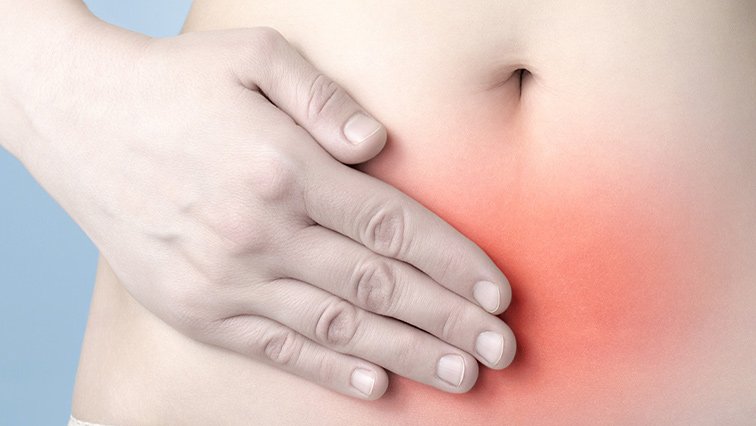Issues around women’s reproductive health are often an enigma and difficult to comprehend. Endometriosis is one such enigma as it is often misdiagnosed, mainly because its causes are so hard to define.
The month of March marks Endometriosis Awareness Month, and a host of campaigns and events take place across different parts of the world to help raise awareness of the condition.
What is endometriosis?
Quite basically explained, endometriosis is a condition in which tissue that normally lines the uterus grows outside of the uterus (endometriotic lesions), as illustrated below:
Design by SABC Digital News
The condition, which can cause extreme pain and discomfort, is mostly associated with menstrual irregularities.
Gynaecologist and Reproductive Medical Assistant at Vitalab Fertility Clinic in Sandton, Dr Anthony Picton, describes it as an extremely complex condition that differs from one woman to the next.
Endometriosis affects 10 to 15% of women of reproductive age around the world.
Picton says while medicine cannot pinpoint its exact cause, there are some theories that the condition could be linked to genetics, meaning it could be passed on from one sister to the next, or from mother to daughter.
Pain associated with menstrual periods a general symptom
Generally, the primary symptom of endometriosis is pain that is often associated with menstrual periods. According to Mayo Clinic, other symptoms may include:
- pain with bowel movements or urination
- excessive bleeding
- infertility
- fatigue
- diarrhoea
- constipation
- abdominal bloating or nausea
- pain during or after sexual activity
While many women tend to experience general pain or cramping during their periods, Picton says menstrual pain associated with endometriosis can be debilitating and can affect a woman’s daily activities.
Picton outlines theories on possible causes and symptoms:
Who is affected?
Young girls can be affected by the symptoms of endometriosis from as early as their first menstruation. The condition is accumulative. Once established, its presence tends to increase, leading to a worsening of symptoms over time.
Unfortunately, Picton says many women across the world are often failed by the healthcare system. It takes an average of 7 to 10 years to reach a diagnosis from when symptoms first appear.
In other words, while a woman may present symptoms from her early teens, she may only be diagnosed in her late 20’s.
What are the possible factors behind a delay in diagnosis?
- Symptoms such as abdominal pain can often be diagnosed as irritable bowel syndrome, or attributed to chronic constipation.
- In turn, patients could be prescribed medication that suppresses the said symptoms.
- Prescribed medication could prove insufficient in addressing severe pain associated directly with the condition.
- ‘Pain in women during periods is normal’ – when this happens, there tends to be no sense of urgency in attending to younger girls who complain of period cramps.
- This can result in a worsening of the condition over time.
- Parents of younger patients (girls in early teens to early twenties) are often reluctant to have their children start taking contraceptives as a form of treatment over fears that they may start experimenting in sexual activity.
Picton explains reasons behind delayed diagnosis:
Is there a link between endometriosis and infertility?
Endometriosis can affect a woman’s ability to fall pregnant. In the case where a woman is trying to conceive and has the condition, blood from the endometrial tissue in the abdomen has no place to go – Inflammation then occurs overtime. Blood becomes trapped in the pelvic area and can form scar tissue and adhesions, which can, in turn, affect fertility.
Laparoscopy a gold standard for diagnosis
There are different methods to detect and diagnose endometriosis, namely:
- Pelvic examination
- MRI (Magnetic resonance imaging)
- Ultrasound
Picton, however, emphasises laparoscopy as a gold standard.
According to WebMb, a laparoscopy is a surgical procedure where a patient is placed under anaesthesia, with small incisions made in the abdomen with gas “to get a better look at your internal organs.”
A thin-tubed video camera called the laparoscope is then inserted to look for any endometrial scarring, which can then be removed during the procedure.
Picton says a laparoscopy should not only serve as diagnosis, but it should also serve as a form of definitive treatment.
What are some available treatment options?
Endometriosis is a complex condition that requires personalised treatment for each affected patient, depending on age and fertility desires.
Picton recommends hormone therapy that reduces pain associated with menstruation. Such medication, which also limits conception, includes:
- Oral contraceptive pills
- Injectable contraceptives
- Oral progesterone pills (which are not contraceptives), specifically designed to suppress endometriosis.
In the case where a woman has a family and no longer wants to conceive, a hysterectomy (a procedure that removes the uterus) can be considered.
Picton, however, urges caution to be exercised before consideration of a hysterectomy, as this is often seen as a worst-case scenario and a last resort.
Picton elaborates on diagnosis and laparoscopy:
Need for more awareness
Picton says literature studies around endometriosis largely stem from work in Europe and the United States of America.
There is no specific data for the South African population as such, thus reflecting a need to conduct more research and create more awareness of the condition in the country.
The slideshow below provides some fast facts on Endometriosis:
Fast Facts on Endometriosis by SABC Digital News





